Considering Building an AR-15 Pistol? Here’s the 411
Considering Building an AR-15 Pistol? Here’s the 411
Editors’ Note: The information contained in this article is for informational purposes only. This content is not intended as legal advice and should not be taken as such. Those wishing to obtain more information about the construction of an AR Pistol should contact the Bureau of Alcohol, Tobacco, Firearms and Explosives directly.
You might have seen guns similar to what’s pictured here at your local range, or in the latest #FirearmsFriday post on your favorite social media site. AR-15’s with scandalously short barrels and end pieces that roughly resemble stocks, but also have hook and loop closures or other odd markings. Surely, these miniature pea shooters have a paperwork-intensive process for ownership, right? You might be surprised to learn that these firearms are actually classified as pistols and therefore don’t follow the same laws as their rifle counterparts.
Before we get into the specifics of an AR Pistol, we first need to delve into the legalities of firearms as a whole. Fair warning, this will be the first of many disclaimers in this article. The enforcement of firearms law on a federal level falls to the Bureau of Alcohol, Tobacco, Firearms and Explosives. The BATFE occasionally receives questions from citizens about configurations of firearms and the legality of those configurations. These questions are replied to via letters and many of you may have already heard the term “opinion letter.”
It’s in these letters that much of the information about constructing things like AR Pistols has been released. However, it’s extremely important to remember that these letters are not laws, but merely the BATFE’s opinion on how the law pertains to that person’s individual question. Therefore, it’s very important to treat these letters as exactly what there are and to seek out the information for building and owning firearms from the laws themselves.
Pistols vs. Rifles
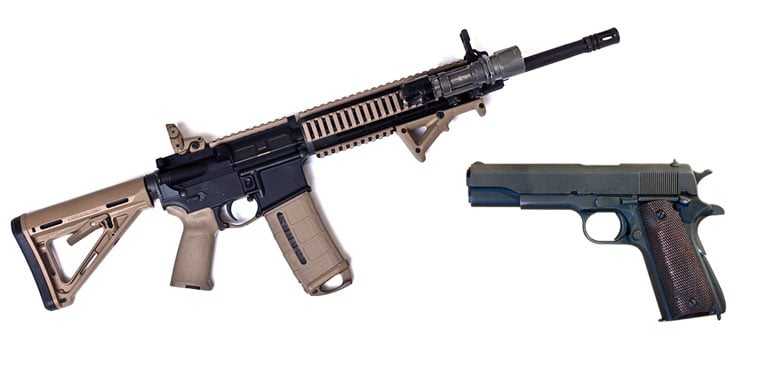
A “pistol” is defined in the US Code 18 U.S.C., § 921(A)(29) as “a weapon originally designed, made and intended to fire a projectile from one or more barrels when held in one hand and having (a) a chamber as an integral part of, or permanently aligned with, the bore; and (b) a short stock designed to be gripped by one hand and at an angle to and extending below the line of the bore”
Alternatively, a “rifle” is defined in US Code 18 U.S.C., § 921(A)(7) as “a weapon designed or redesigned, made or remade, and intended to be fired from the shoulder.” These definitions are fairly broad, but it’s in these definitions that those wishing to build an AR Pistol can rejoice. After all, the design of the AR-15 fits all of the definitions of a “pistol” except for one, the stock.
Due to the fact that everything in these definitions revolves around whether the firearm is designed to be fired from the shoulder or from one hand, stocks are what end up making the difference between a rifle and a pistol. Generally speaking, a firearm without a stock would be considered a pistol and a firearm with a stock would be considered a rifle. For the purposes of this article, we’re excluding shotguns or other types of firearms and focusing on pistol vs. rifle.
The Keeper of the Keys
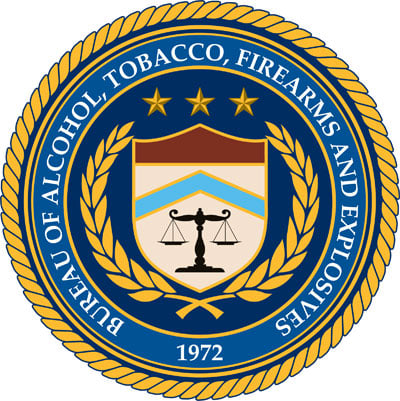
Simple enough, right? Well buckle up, because this is where it gets fun. Currently, some firearm configurations are regulated by the National Firearms Act. This act controls machine guns, suppressors, destructive devices, short-barreled shotguns and short-barreled rifles.
In this article, we’ll only be referring to the laws governing short-barreled rifles.
For those unfamiliar with the NFA, citizens that wish to buy or manufacture an NFA item, such as a short-barreled rifle, are required to pay a $200 tax and apply to the BATFE for the item.
As long as the item is considered to be legal to buy or manufacture by the BATFE, the form is filled out correctly and they deem the person submitting the application to be legally able to own the item, the stamp is issued.
The definition of a short-barreled rifle in the US Code 18 U.S.C., § 921(A)(8) is “a rifle having one or more barrels less than sixteen inches in length and any weapon made from a rifle (whether by alteration, modification, or otherwise) if such weapon, as modified, has an overall length of less than twenty-six inches.” So if you’re building an AR-15 rifle (or any rifle for that matter) with a barrel that measures 16” or more, the NFA laws wouldn’t apply. However, anyone looking to build a rifle with a barrel under 16” must apply for and be granted the tax stamp before manufacturing the firearm. The last part is particularly important for those wishing to build an SBR. Even simply having the parts in your possession to construct an SBR could get you in legal trouble.
AR Pistols
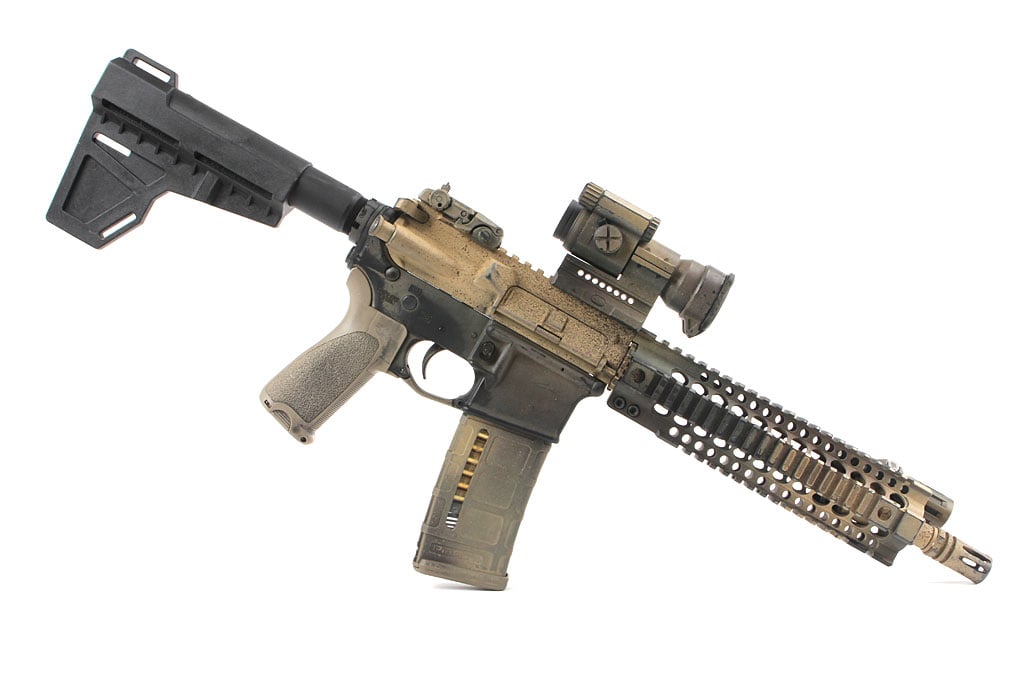
Now that we’re familiar with the definitions of both a pistol and a rifle, as well as the legalities of constructing an SBR, we can finally delve into the legalities of an AR Pistol. As the defining characteristic of a rifle is a stock, a firearm built on an AR-15 lower receiver with all the standard AR-15 parts and no stock, would be considered a pistol. Without a buttstock, the firearm would not be intended to fire from the shoulder.
Due to the fact that the NFA doesn’t regulate pistol barrel length, barrels shorter than 16″ are found on many AR Pistols, but they’re not required. You could build one with an 18″ barrel if you desired, the only difference would be that you could place a stock on an 18″ barreled pistol, converting it to a rifle and not running afoul of the NFA.
Wait a minute though. The pictures all throughout this article show a stock on the end of this so-called “pistol” and it has a barrel that’s definitely shorter than 16″ so what gives? This is where we descend into yet another level of the legal rodeo that is firearms manufacturing and ownership. The device featured in these photos isn’t defined as a stock, but as a brace.
Brace Yourself
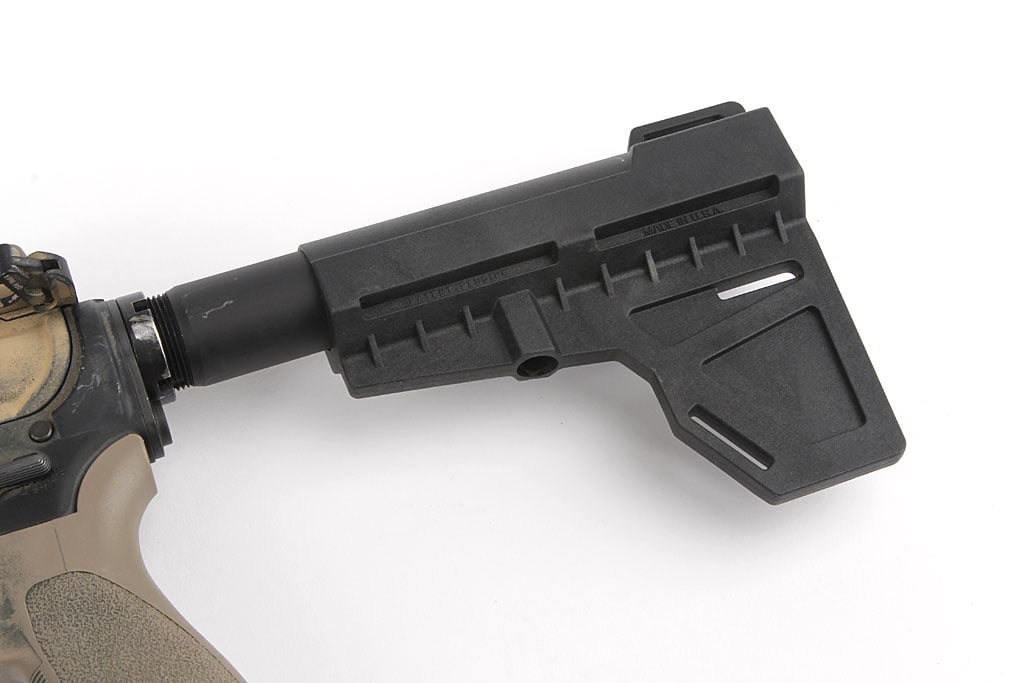
Pistol braces are devices designed to add stabilization to a pistol when firing it. Many feature openings for a hand and straps to secure the firearm to a user’s arm for better control. Usually, the manufacturer of the brace gets an opinion letter from the BATFE stating that the device doesn’t violate the NFA laws, because it’s not designed or intended to fire a weapon from the shoulder. Once again though, it’s important to remember that these opinions from BATFE aren’t laws, but interpretations of the law by the BATFE.
Note that there isn’t a particular law governing the features of pistol braces, just a requirement that they aren’t designed as a stock. Remember, the definition that determines rifle vs. pistol is “a weapon designed or redesigned, made or remade, and intended to be fired from the shoulder.” So if the brace isn’t intended to be fired from the shoulder, then it can be added to an AR Pistol without violating the NFA. This is where much of the controversy with these pistol braces comes in.
Shouldering a Brace
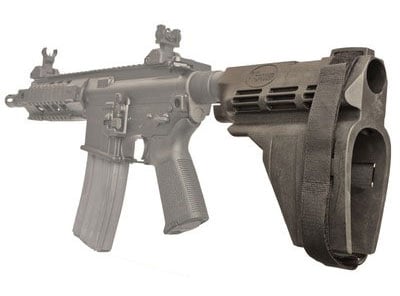 One of the very first pistol braces on the market was the SB-15 Brace, a partnership between SB-Tactical and Sig Sauer. The creator of the brace, Alex Bosco, originally designed it to help disabled shooters maintain control of a pistol while firing.
One of the very first pistol braces on the market was the SB-15 Brace, a partnership between SB-Tactical and Sig Sauer. The creator of the brace, Alex Bosco, originally designed it to help disabled shooters maintain control of a pistol while firing.
While the original intent of the brace may have been for the disabled, one citizen wondered if use of the brace from a shouldered position would reclassify the pistol as an SBR. So he did what any responsible citizen with a firearms question would do and sent a letter to the BATFE. Their response caused the popularity of the Sig Brace to skyrocket.
In their response, the BATFE stated that, “Certain firearms accessories such as the Sig Stability Brace have not been classified by the ATF as shoulder stocks and, therefore, using the brace improperly does not constitute a design change. Using such an accessory improperly would not change the classification of the weapon per Federal law.” This opened up a new opportunity for the pistol brace, as users began manufacturing pistols with short barrels and braces rather than stocks, to circumvent the need to apply for an NFA tax stamp.
With this new information, more letters poured into the BATFE and less than a year later, they issued an open letter reversing their opinion on the matter. In a new statement, they wrote, “ATF hereby confirms that if used as designed—to assist shooters in stabilizing a handgun while shooting with a single hand—the device is not considered a shoulder stock and therefore may be attached to a handgun without making a NFA firearm. However, ATF has received numerous inquiries regarding alternate uses for this device, including use as a shoulder stock. Because the NFA defines both rifle and shotgun to include any “weapon designed or redesigned, made or remade, and intended to be fired from the shoulder,” any person who redesigns a stabilizing brace for use as a shoulder stock makes a NFA firearm when attached to a pistol with a rifled barrel under 16 inches in length or a handgun with a smooth bore under 18 inches in length.”
As you might imagine, this caused quite a stir in the firearms community, with many people ditching their braces or pistols entirely, not wanting to run afoul of the NFA or the BATFE. As of the writing of this article, it’s still a hot button debate in any gun shop or range. Some will tell you that due to the BATFE reversing their decision, shouldering the pistol with a brace redesigns that firearm into an NFA weapon. Others will say that alternative uses of an object can’t redesign it, as it makes no physical changes to the item itself. So who’s right? The answer is that we don’t know yet, because there’s not a clear definition of “redesign.”
The Lightning Rod
The BATFE cited in their response letter, changing their position on the shouldering of a brace, that “The GCA does not define the term “redesign” and therefore ATF applies the common meaning. “Redesign” is defined as “to alter the appearance or function of.” See e.g. Webster’s II New College Dictionary, Third Ed. (2005).”
The “GCA” they’re referring to is the Gun Control Act and the BATFE is correct that it doesn’t define the term “redesign.” So while the BATFE have given their opinion on what the definition is, it could be interpreted differently by another entity. What happens when there’s ambiguity in our laws? That usually falls to a court to decide. However, no court case has yet been heard on shouldering a brace because the BATFE hasn’t prosecuted anyone for it yet.
The BATFE and the firearms community are locked in a stalemate of sorts, with the firearms community afraid that shouldering their braced pistol could send them to prison and the BATFE not prosecuting anyone for it yet. Until a case is brought against a user in court, there won’t be a clear definition of the law and it will remain in this grey area. The only problem with this is that a citizen would need to be a lightning rod of sorts and be willing to shoulder the brace while firing a pistol and be arrested for it. That’s a lot of risk for a citizen to take just to have a clear definition for a single word.
Other AR Pistol No-No’s
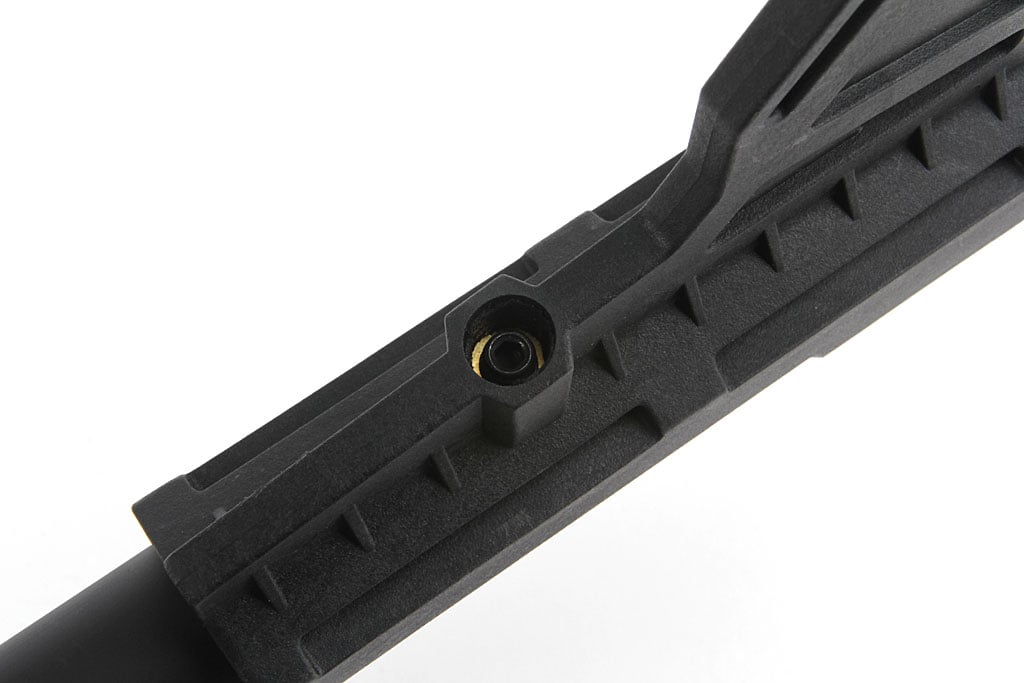
While you may be itching to put together your own AR Pistol now after reading some info on them, there are a few more things you should be aware of regarding their legality. One major item that can’t be included on pistols with an overall length of under 26″ is a vertical fore-grip. That rule really is as complicated as it sounds. Measure your AR pistol from the tip of the barrel (with any removable muzzle devices taken off) to the end of the buffer tube.
It’s important to clarify here that it’s the permanent end of the pistol, so an extended brace would need to be permanently attached in an extended position to count toward the length. The Shockwave Brace used above in the photos features an adjustment, so the measurement of that pistol is to the end of the buffer tube. If this overall measurement is over 26″ then you can use a vertical fore-grip. However, those with overall lengths under 26″ need not worry, the BATFE has said that angled fore-grips like Magpul’s AFG are just fine on pistols.
The final important piece of information for those looking to build an AR Pistol is the state of the lower receiver. Once an AR-15 lower receiver has been built as a rifle, it cannot be built into a pistol without registering it with the BATFE. This means if you bought a completed rifle from a gun shop, you can’t build that rifle into a pistol without a tax stamp. However, if you purchased a stripped lower receiver and built it into a pistol from the start, that gun can then be built into a rifle configuration (with NFA laws still applicable) and later back into a pistol configuration if you so desired.
If this is something you plan on doing, it’s very important that you remain aware of the NFA laws when changing a pistol into a rifle to ensure that you’re not violating the law. It’s also important when you purchase the stripped lower that it’s not designated as a rifle on the 4473 form.
Conclusion
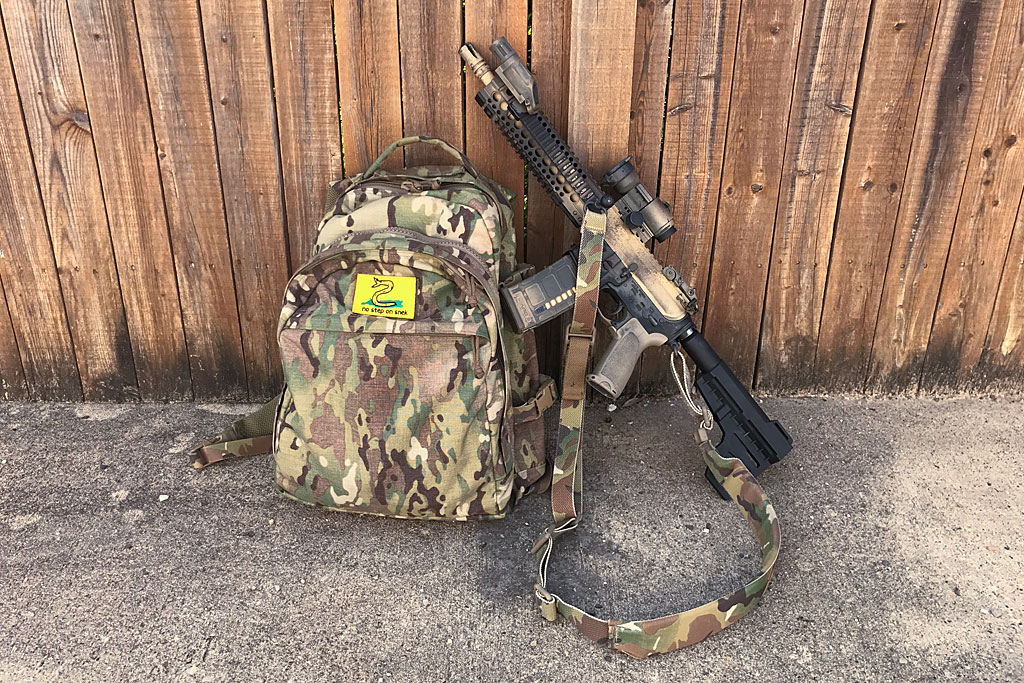
After reading all of this, you may have decided that you don’t even want to consider building an AR Pistol and honestly, we don’t blame you. It can be difficult to wade through all the legalese to make sure that your firearm complies with the law. However, for those interested in building a short barreled rifle, the AR Pistol offers a great interim step while waiting for your tax stamp to come in.
A user could assemble an AR Pistol and then submit a Form 1 to manufacture a short-barreled rifle. Once the paperwork has processed (some users report wait times for Form 1’s at upwards of 258 days) and the stamp is issued, the user could then purchase and install their chosen buttstock. If an AR Pistol is something that does interest you, simply tread carefully and ensure that you’re following the letter of the law.
To preempt some of the inevitable comments about the pistol featured in the photos, the following is the build list for this pistol in case anyone is curious about the parts used. The owner is still sourcing a good folding front sight, so feel free to leave a comment with what you’d recommend.
- Spike’s Tactical Honey Badger Lower
- CMMG Lower Parts Kit
- Bravo Company Mod 2 Grip
- Palmetto State Upper, 10.5″ CHF Barrel and Gas Tube w/A2 Flash Hider
- Midwest Industries T-Series Free Float 9″ Handguard
- Haley Strategic Partners WML w/Off-set Picatinny Mount
- Aimpoint Patrol Rifle Optic
- Magpul MBUS
- QD End Plate
- KAK Shockwave Buffer Tube
- KAK Shockwave Blade Pistol Stabilizer






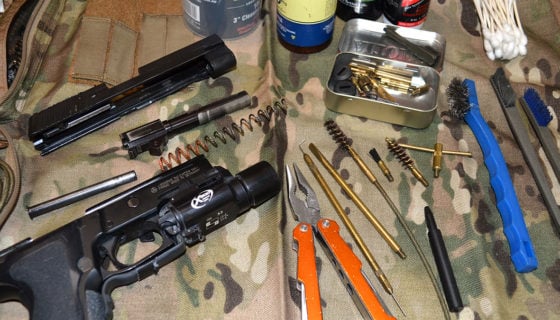
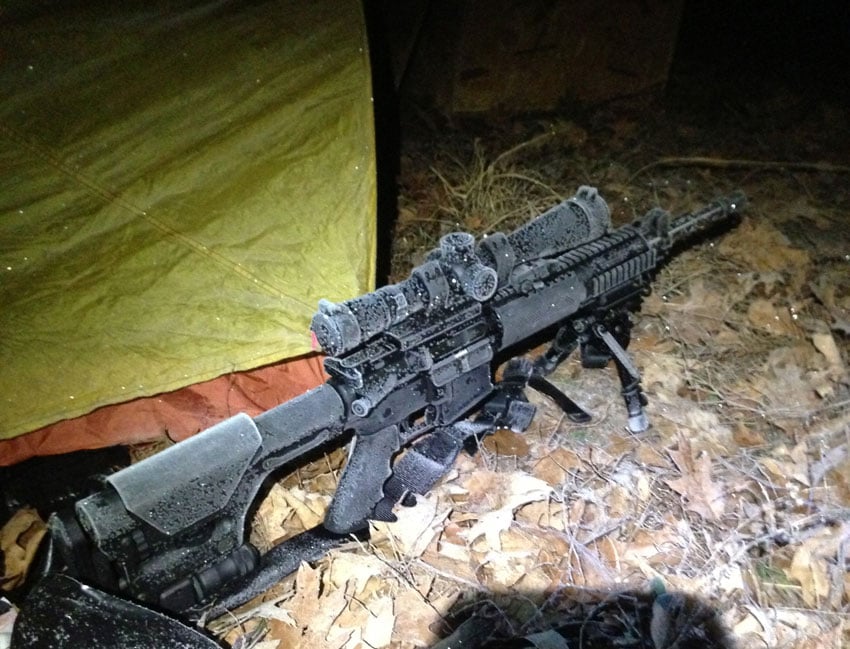
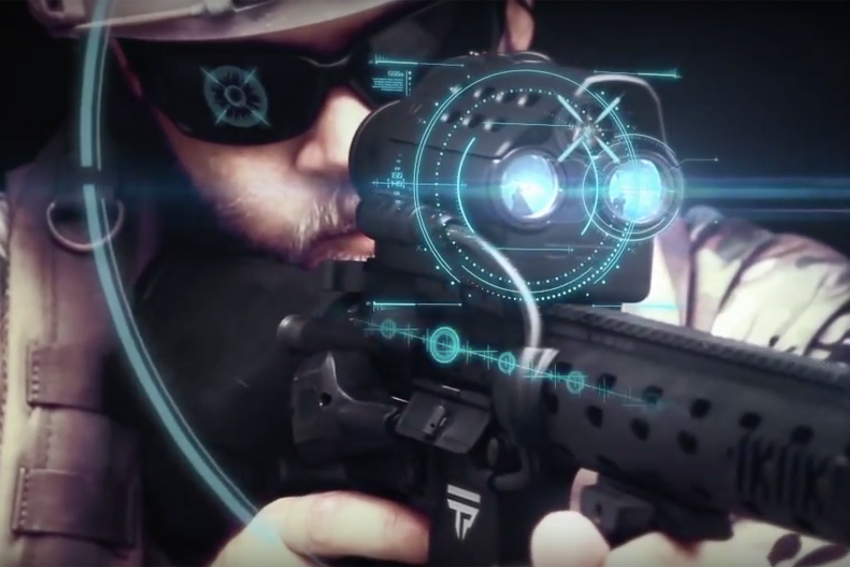
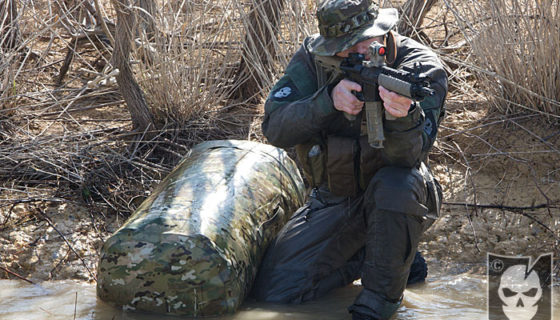

Discussion